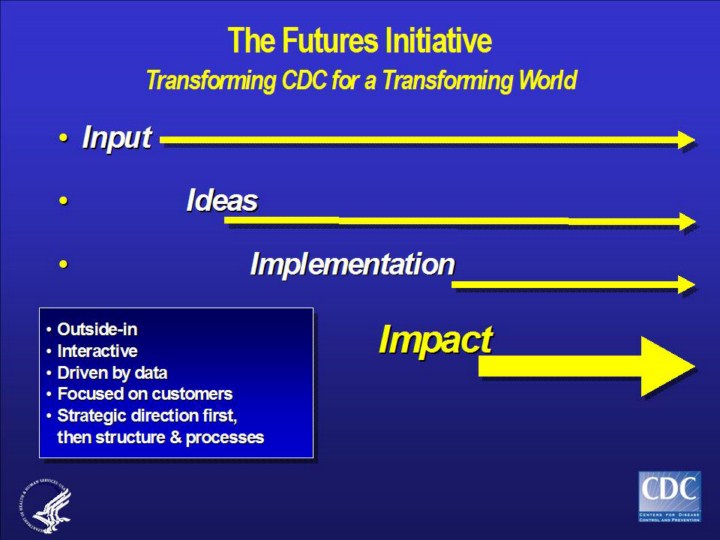| front |1 |2 |3 |4 |5 |6 |7 |8 |9 |10 |11 |12 |13 |14 |15 |16 |17 |18 |19 |20 |21 |22 |23 |24 |25 |26 |27 |28 |29 |30 |31 |32 |33 |34 |35 |36 |37 |38 |39 |40 |41 |42 |43 |44 |45 |46 |47 |48 |49 |50 |51 |52 |53 |54 |55|56 |57 |58 |review |
 |
Despite these
significant successes, we want to make health disparities a much bigger
focus for our entire agency
The Futures Initiative
provides an opportunity for CDCs OMH, its partners, and the rest of CDC
to do more, faster, to eliminate health disparities in the United
States.
I know there has been
concern about how Futures will impact the Office of Minority Health.
CDCs executive leadership teams is examining ideas to strengthen not
weaken its current efforts and activities. We want to place the Office
of Minority Health where it can have optimal impact and this summer we
held a conference call with over 30 external partners to get their
input.
One visible
manifestation of this expanded effort: At each senior staff meeting, we
go center by center, highlighting one particular program a month that is
addressing health disparities in a direct way and identifying what
lessons can we can learn from that and how we can utilize those lessons
to improve our programs across the board.
This spring CDC held a
media conference on
Racial/Ethnic
Health Disparities Focusing on Heart Disease and HIV/AIDS
First Conference on
Increasing the Number of American Indian, Alaska Native, & Native
Hawaiian Professionals in public health careers. (July 20 in Atlanta)
Source: Improving Health, Eliminating Disparities, Oct. 27, 2004 GerberdingMorehousePrimaryCareConference2b
|